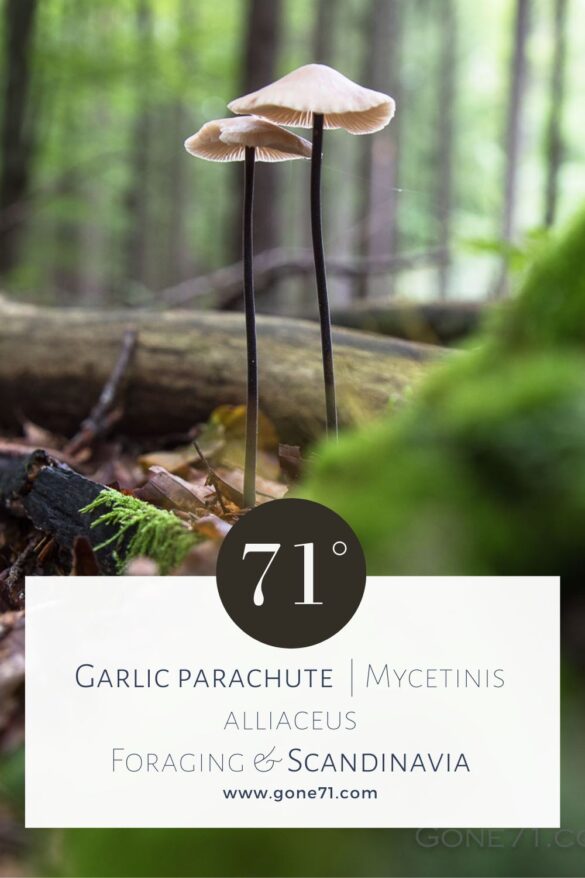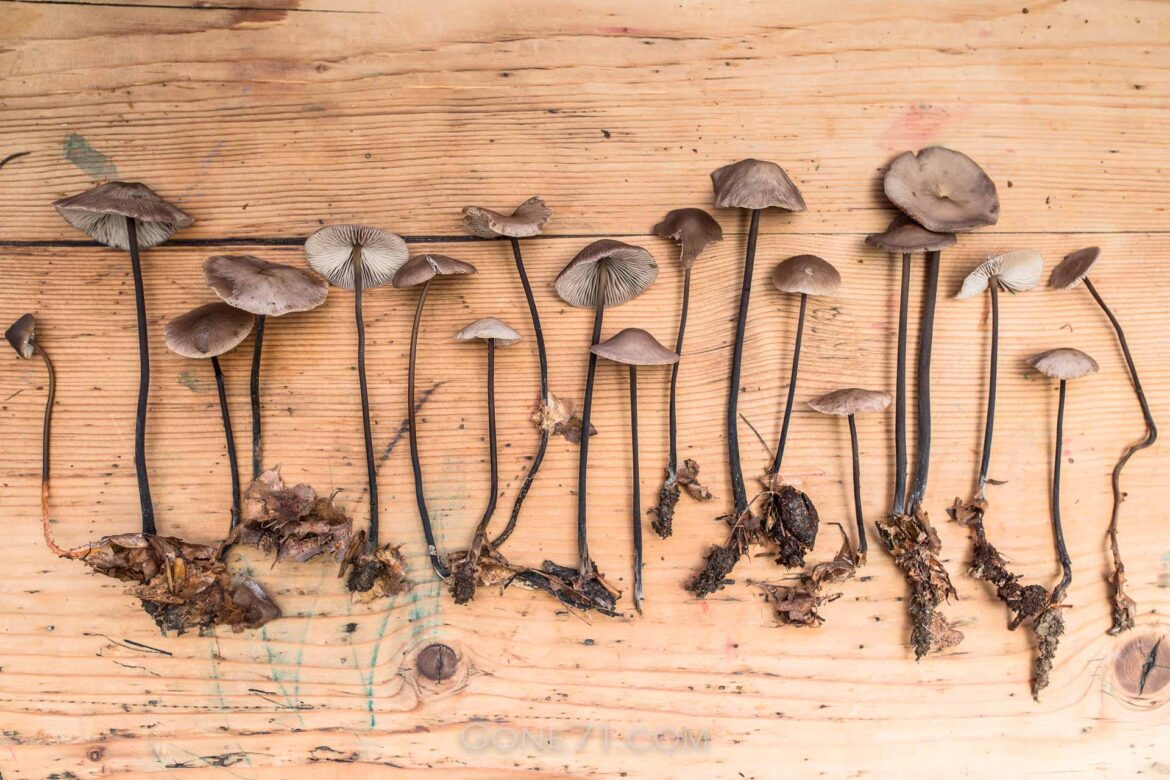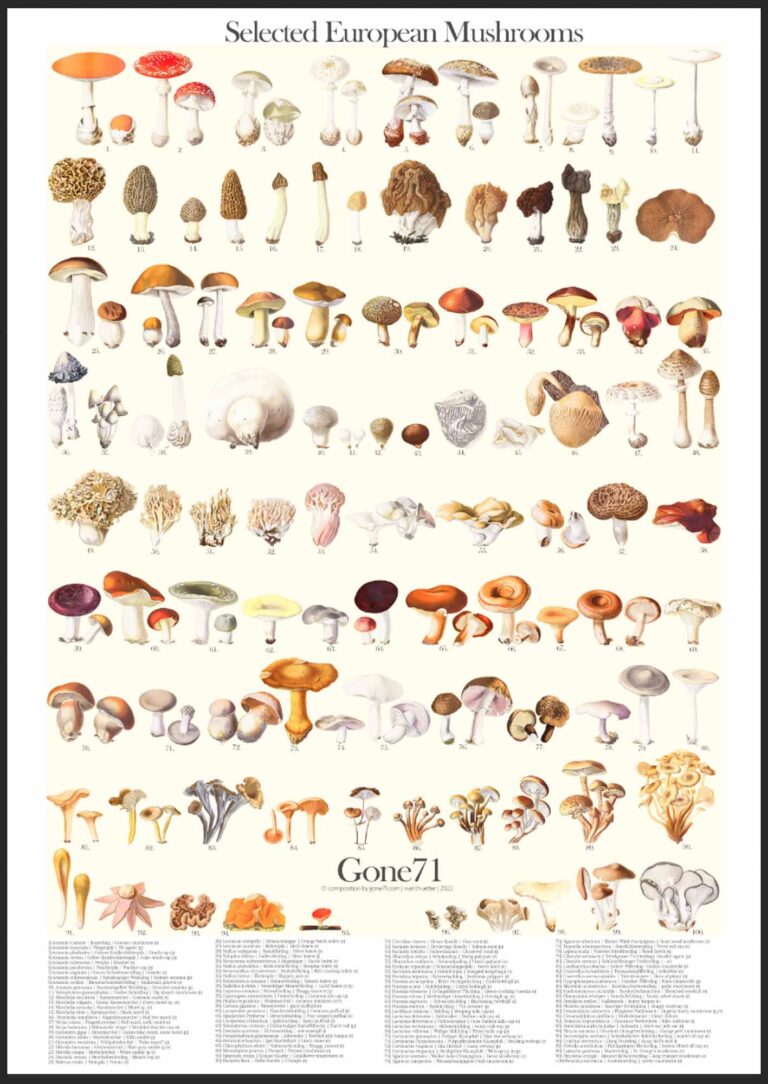nor.: Stor løksopp | swe.: Stor lökbrosking | fin.: suuri laukkanahikas | dt.: Langstieliger Knoblauchschwindling | sci. syn.: Marasmius alliaceus
The Mycetinis alliaceus, also known as the garlic parachute, is a species of mushroom that is widely known for its intense and sharp garlic-like aroma and flavor. The mushroom is edible and is considered a delicacy in some cultures.

Appearance & habitat of the garlic parachute
cap diameter: 2-8 cm
stem: up to 20cm
months: June – Novemeber
colours: light brown, leathery brown, ochre gray
habitat: decidious forest, beech – on dead wood e.g. beech
smell: intense garlic
consumption: cooked
The Mycetinis alliaceus, also known as the garlic parachute, is a species of mushroom that is widely known for its intense and sharp garlic-like aroma and flavor. It is a part of the Marasmius genus and is characterized by its leathery and runny appearance with a cap that measures between 2-8 cm in diameter, and can be light brown, leathery brown, or ochre gray in color. The flesh of the mushroom is thin, gray-beige, and white-gray brown in color.
The stem of the garlic parachute measures between 6-15 cm in length and is 3-5 mm thick, and is black, dark brown, or red-brown in color. The stem is hollow and cylindrical, and is rooted in dead wood, often reaching a length of up to 20 cm. The mushroom has white, cream-colored or gray-brown gills. The spore powder of the garlic parachute is white and the spores have a smooth, hyaline appearance.
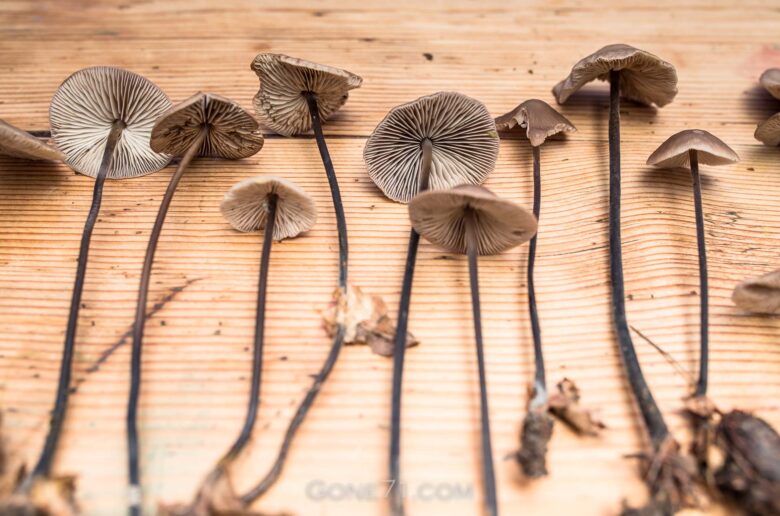
The garlic parachute is commonly found in deciduous forests, often buried in dead beech branches, and thrives in alkaline soils. It can also be found on conifers, but is rare. The species appears in early summer and continues to grow throughout the fall.
Confusing Garlic parachute with other species
Its intense garlic odour in combination with its appearance severely limits the potential for confusion. First and foremost, confusion of Mycetinis alliaceus, can be made with other species of mushrooms that have similar olfactory characteristics. Some mushrooms that may be mistaken for the Garlic Parachute include:
- Mycetinis scorodonius, also known as vampire’s bane. This mushroom is milder in taste and can also be used in larger quantities. This mushroom usually has a wider culinary distribution and is better known.
- Mycetinis querceus (M. prasiosmus), is another garlic-smelling fungus that is very similar to the garlic parachute. However, it usually prefers leaves as a habitat. The pruinose or pubescent reddish brown stipe, together with its habitat on deciduous leaf litter are usualy enough to distinguish it from other European species of Mycetinis. This mushroom can also be used as a seasoning mushroom, but it is much sharper and more intense and some recommendations speak of 1 cap per 5 kg of mixed mushrooms.
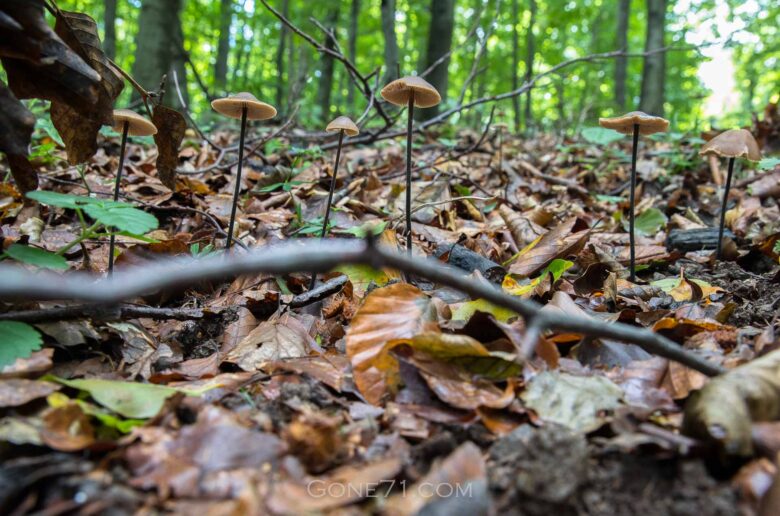
Only harvest mushrooms that you can identify with 100% certainty! The consequences can be life threatening if you are wrong. If you have the slightest doubt: do not eat the mushroom! This is not a mushroom guide! For correct identification consult a mushroom expert.
Garlic parachute in the kitchen
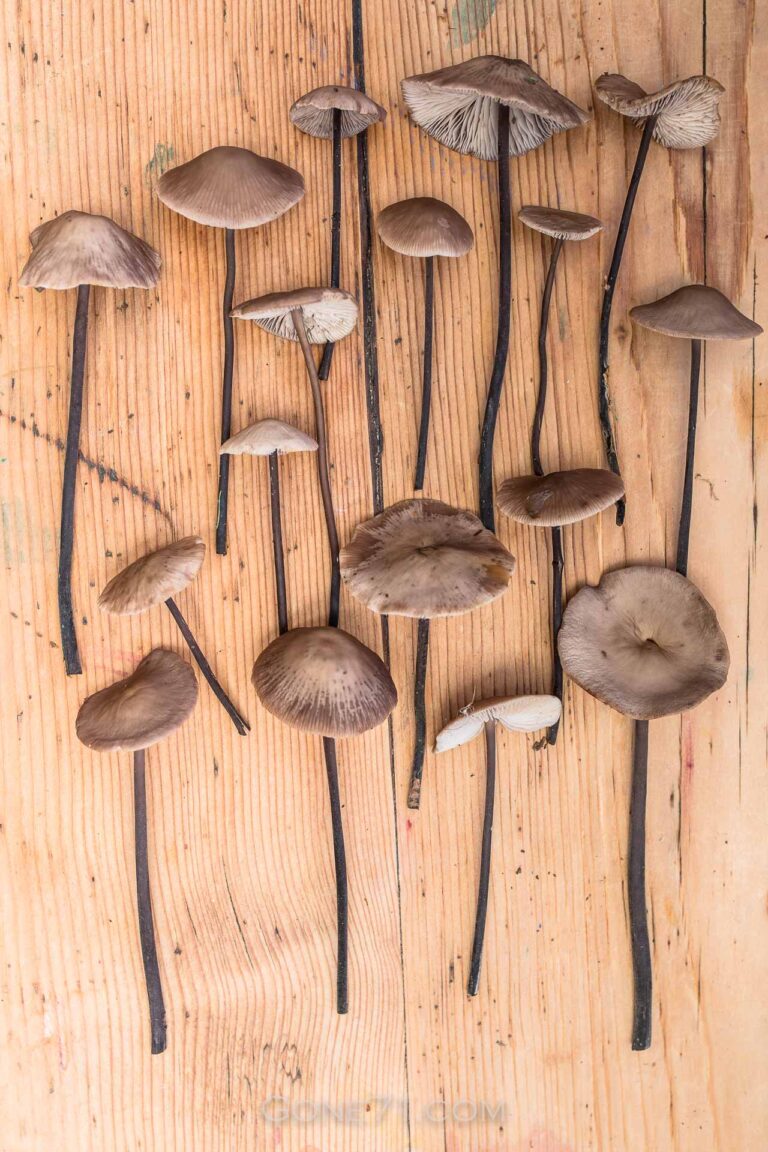
In contrast to vampire’s bane (M. scorodonius), garlic parachute has a much more intense flavour and should be dosed carefully. Some authors recommend, for example, only 1 – 2 mushroom heads per 1000 grams of mixed mushrooms. Be carefu, approach this rather slowly and try out how much of this mushroom is tolerate. For us the intense and pungent garlic flavour is excellent for seasoning soups or other dishes, though.
Drying Garlic parachute
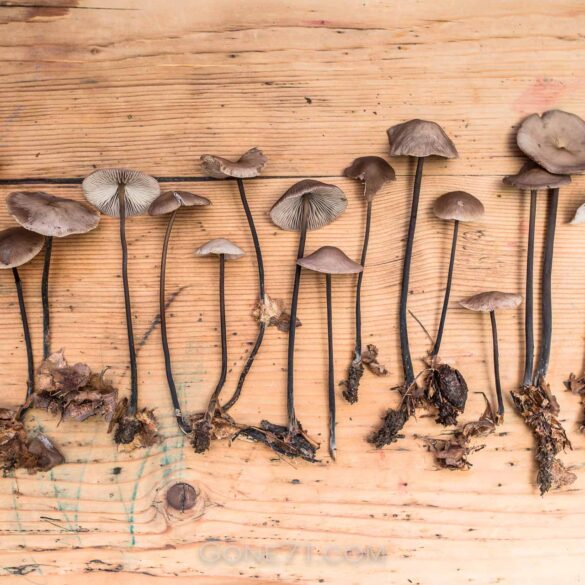
Drying Garlic Parachutes
Ingredients
- Fresh garlic parachutes
Instructions
- Clean the fresh garlic parachutes thoroughly to remove any dirt or debris.
- Cut the stems off the caps and discard them.
- Cut the caps into thin slices or chop them into small pieces, depending on your preference.
- Spread the slices or pieces out in a single layer on a clean towel or parchment paper.
- Allow the garlic parachutes to air dry in a well-ventilated area for 2-3 days, or until they are completely dry and brittle to the touch.
- Store the dried garlic parachutes in an airtight container or jar, in a cool, dark place for up to a year.
- To rehydrate the dried garlic parachutes, simply soak them in water for 10-15 minutes until they are plump and tender.
- Use the dried garlic parachutes as you would fresh, in sauces, stews, soups, and other dishes.
Notes
Garlic parachutes are also very good for making mushroom powder. If you have a dehydrator at hand, you will of course save a lot of time in the drying process.
We have compiled this overview with the best of knowledge and belief, but do not claim to be complete and reserve the right to make errors.
Learn more about poisonous mushrooms and mushroom poisons here
↓↓↓
Find some inspiration in our illustrations
↓↓↓
Find some inspiration in other mushroom recipes
↓↓↓
